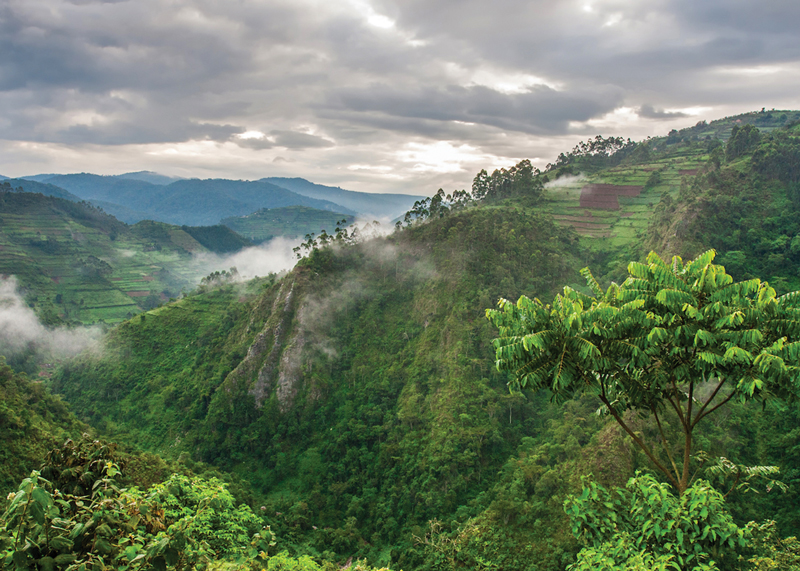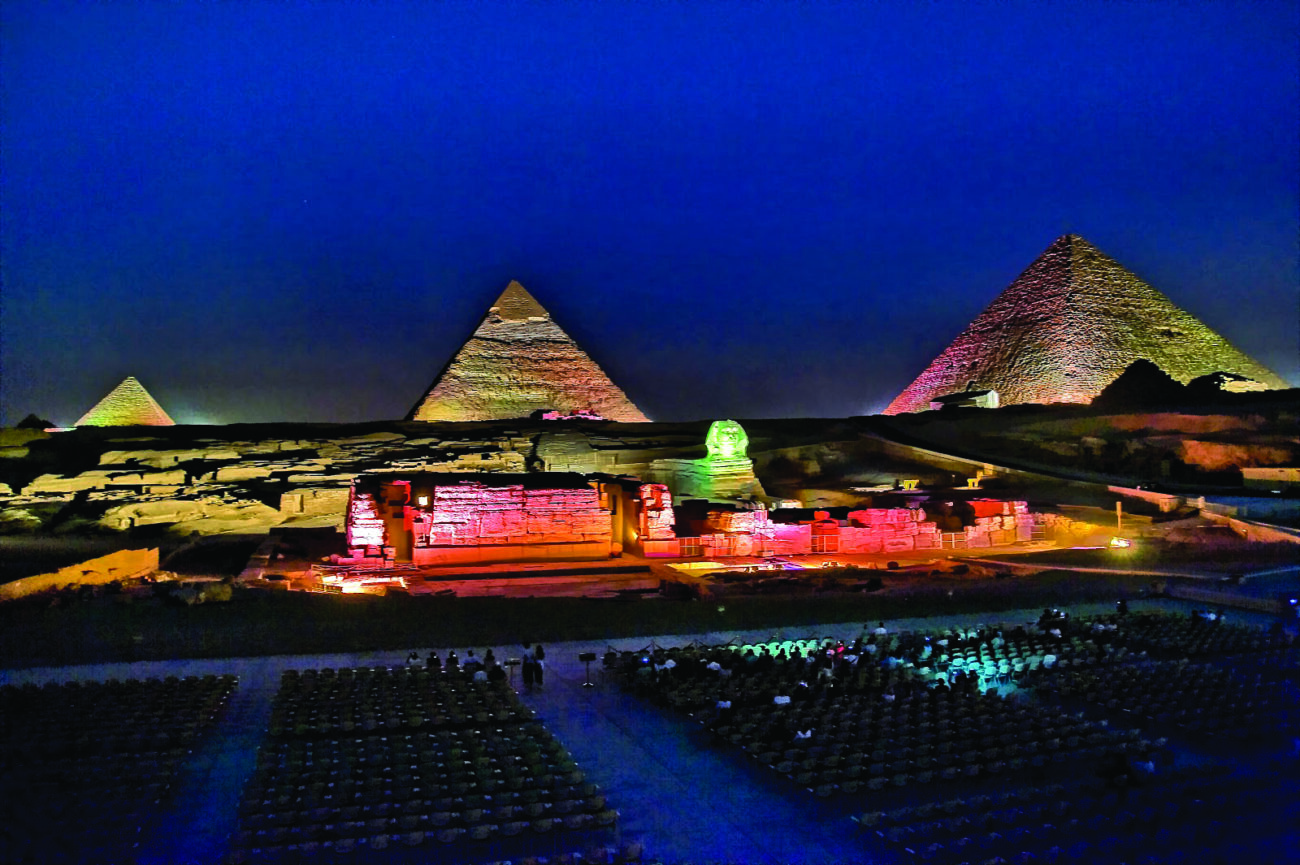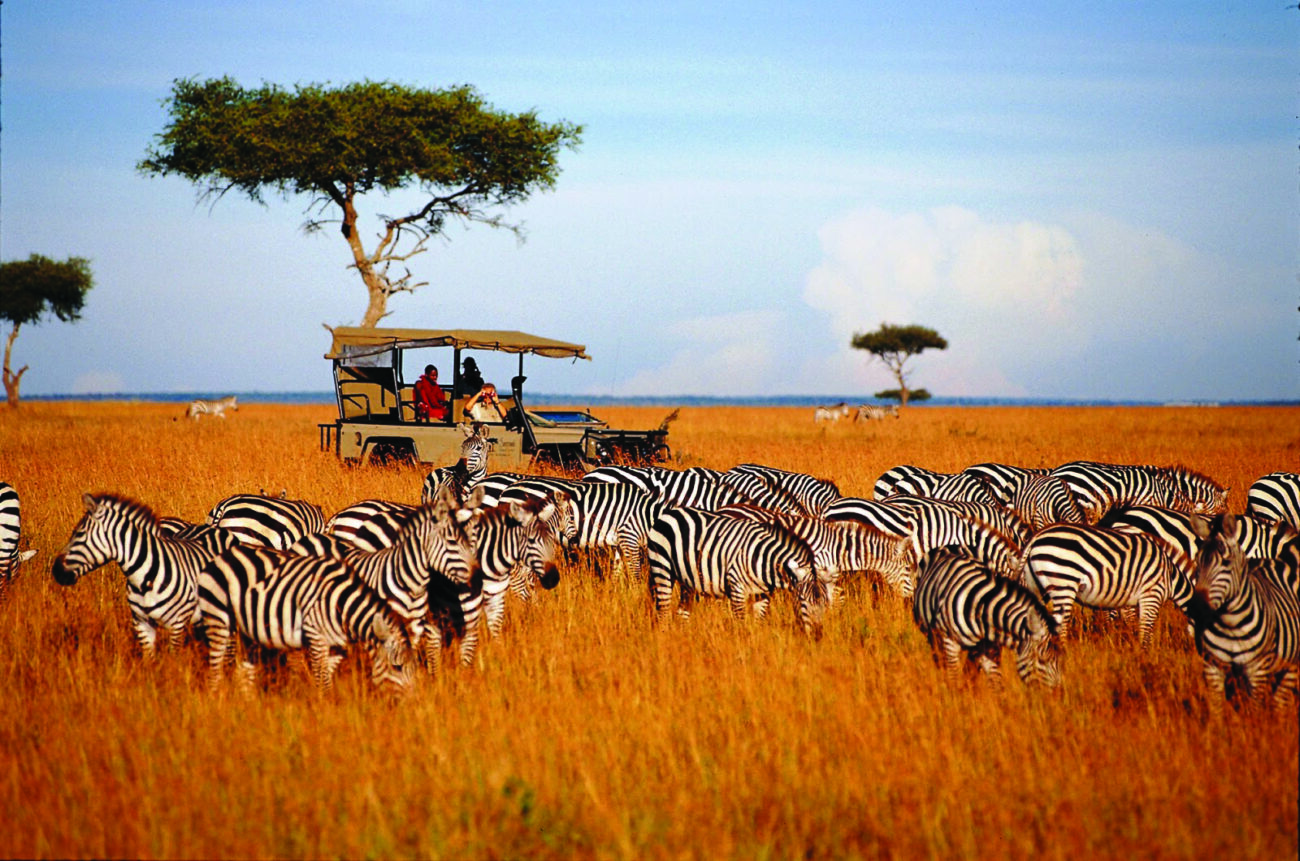Gorilla Trekking in Uganda
Mountain gorillas are an endangered species that live in the forests of Uganda,

Rwanda and the Democratic Republic of the Congo, high in the mountains, at elevations of 8,000 to 13,000 feet. They have thick, shaggy, black fur, and more of it, as compared to other great apes. Adult males grow a saddle of silver fur on their backs, are therefore known as Silverbacks. The species’ distinctive fur keeps them warm in a habitat where temperatures often drop below freezing. As humans have moved farther into the gorillas’ territory, they have been pushed higher into the mountains for longer periods, forcing them to endure dangerous and sometimes deadly conditions. There are only approximately 1,000 mountain gorillas alive today.
Mountain gorillas form families, and there are 12 family groups that can be visited on a trekking expedition. Most family groups have one male Silverback leader, but several groups have more than one. As with all types of families, the number of members rises and falls with births and deaths. The groups wander through their home ranges of 10 to 15 square miles, feeding and resting throughout the day. They are herbivores, so forage for food as they wander, eating bamboo and leafy plants.
Mountain Gorilla Trekking is strictly controlled by the Uganda Wildlife Authority (www.ugandawildlife.org). Permits are required, and a limited number of 120 are issued each day. Demand has grown for this activity, so it is suggested that travelers obtain their permits at least 6 months in advance of travel. The cost of the permits range from $600 to $1,500, depending on the length and type of encounter. A standard permit allows visitors to view the gorillas for one hour, but the trekking itself can take from 30 minutes up to nine hours, seeking the gorillas in the forest. Though the cost may seem high, these permit fees contribute to conservation and protection of the species, and do include the park entrance and cost of the guide.
Fortunately, the population of mountain gorillas has increased due to trekking activities. Studies have shown that mountain gorillas that are regularly seen by researchers and tourists have survived better than unvisited gorillas; they benefit from the greater protection available in these areas and from regular monitoring.
Trekking for mountain gorillas begins from four major regions, each visiting specific family groups. In Uganda, most gorilla families are located in Bwindi Impenetrable Forest, and one group resides in Mgahinga National Park. The family group in this location often strays across the border into the Congo.
To participate in a Mountain Gorilla Trekking expedition, a traveler should be healthy and physically fit. The animals are located at high altitude, and their habitat is in dense vegetation. Sometimes it takes an entire day to locate a family group, but trekking guides are familiar with the habits of each group. Tours are available year-round, but weather conditions in the rainy season makes the terrain even more difficult to traverse. The wettest months in this region are in March, April and May and again in October and November. December to late February and from June to September are the favored months to visit.
Trekkers should pack lightly, but will need to bring many items to ensure their comfort, such as insect repellant, binoculars, camera, food and water. They should also wear long sleeved, water proof clothing in muted colors. Visitors must be at least 15 years old to participate on the trekking adventure and in good health. Gorillas are extremely susceptible to human illness, and even a cold can be passed very easily to the animals, which can be life threatening to them.
National Parks
Mgahinga Gorilla National Park is Uganda’s smallest and most scenic national park. Situated in the extreme South-Western corner of the country, it borders Rwanda and the Democratic Republic of Congo. Three extinct volcanoes, part of the spectacular Virunga range, lie within the boundaries of the Ugandan portion of this biologically rich area. Mountain gorillas form the main attraction at Mgahinga National Park, which protects the Ugandan portion of the Virungas, an imposing string of nine freestanding extinct and active volcanoes that runs along the border with Rwanda and the Congo. Activities in the park include guided nature walks through a variety of wildlife, volcano climbing at Muhavura, Sabinyo and Gahinga, bird watching and monkey viewing.
Bwindi Impenetrable Forest National Park is found in southwestern Uganda on the edge of the western arm of the Great East African Rift Valley. This park is divided into four gorilla trekking sectors including Buhoma, Ruhija, Rushaga and Nkuringo, each housing separate gorilla family groups. However, there is much more to Bwindi than gorilla trekking. Forest trails lead to scenic waterfalls and rift valley viewpoints trails while Community Walks through local villages provide insights into the lives of the Bakiga and Batwa people living beside the forest. Bwindi is also one of Uganda’s top birdwatching destinations. Bwindi is one of the few national parks in Africa to have flourished throughout the last Ice Age. It is home to roughly half of the world’s mountain gorillas. It is also home to elephants, chimpanzees, monkeys and various small antelope and bird species.
Pre or Post Trekking
Uganda is easily combined with trips to Kenya or Tanzania. There is even a new flight link between Kenya’s Masai Mara and Uganda. Combining two or more Africa destinations allows travelers to have an unforgettable combination of jungle trekking and game drive safari experience, unbelievably full of wildlife and nature.
Silverbird Travel has extensive experience in the region including Kenya, Uganda, Tanzania, Zanzibar and The Seychelles. Their goal is to provide you with a safari experience that goes beyond expectation. Specialists in East Africa travel, in addition to Gorilla Trekking adventures, Silverbird can arrange horseback or camel riding safaris, rafting excursions, balloon safaris, deep sea fishing, scuba diving, bird watching, and other activities.
www.silverbirdsafari-africa.com
Augustine’s Adventure Africa (AA Africa) specializes in offering private and customized adventure safaris to Tanzania game parks as well as beach holidays in the historical and spice island of Zanzibar. Safari groups are tailor-made for individual groups such as specialty groups, friends and relatives, families, honeymooners, professional photographers, school groups, alumni associations, and more. Each of our trips are guided by very experienced, well-educated, and professional Driver Guides & Naturalists. www.aaafrica.net




